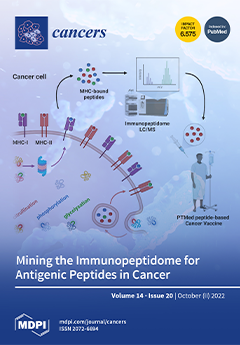Background: We confirmed the benefit of addition of ixazomib to lenalidomide and dexamethasone in patients with relapsed and refractory multiple myeloma (RRMM) in unselected real-world population. We report the final analysis for overall survival (OS), second progression free survival (PFS-2), and the subanalysis of the outcomes in lenalidomide (LEN) pretreated and LEN refractory patients. Methods: We assessed 344 patients with RRMM, treated with IRD (N = 127) or RD (N = 217). The data were acquired from the Czech Registry of Monoclonal Gammopathies (RMG). With prolonged follow-up (median 28.5 months), we determined the new primary endpoints OS, PFS and PFS-2. Secondary endpoints included the next therapeutic approach and the survival measures in LEN pretreated and LEN refractory patients. Results: The final overall response rate (ORR) was 73.0% in the IRD cohort and 66.8% in the RD cohort. The difference in patients reaching ≥VGPR remained significant (38.1% vs. 26.3%,
p = 0.028). Median PFS maintained significant improvement in the IRD cohort (17.5 vs. 12.5 months,
p = 0.013) with better outcomes in patients with 1–3 prior relapses (22.3 vs. 12.7 months
p = 0.003). In the whole cohort, median OS was for IRD vs. RD patients 40.9 vs. 27.1 months (
p = 0.001), with further improvement within relapse 1-3 (51.7 vs. 27.8 months,
p ˂ 0.001). The median PFS of LEN pretreated (N = 22) vs. LEN naive (N = 105) patients treated by IRD was 8.7 vs. 23.1 months (
p = 0.001), and median OS was 13.2 vs. 51.7 months (
p = 0.030). Most patients in both arms progressed and received further myeloma-specific therapy (63.0% in the IRD group and 53.9% in the RD group). Majority of patients received pomalidomide-based therapy or bortezomib based therapy. Significantly more patients with previous IRD vs. RD received subsequent monoclonal antibodies (daratumumab—16.3% vs. 4.3%,
p = 0.0054; isatuximab 5.0% vs. 0.0%,
p = 0.026) and carfilzomib (12.5 vs. 1.7%,
p = 0.004). The median PFS-2 (progression free survival from the start of IRD/RD therapy until the second disease progression or death) was significantly longer in the IRD cohort (29.8 vs. 21.6 months,
p = 0.016). There were no additional safety concerns in the extended follow-up. Conclusions: The IRD regimen is well tolerated, easy to administer, and with very good therapeutic outcomes. The survival measures in unsorted real-world population are comparable to the outcomes of the clinical trial. As expected, patients with LEN reatment have poorer outcomes than those who are LEN-naive. The PFS benefit of IRD vs. RD translated into significantly better PFS-2 and OS, but the outcomes must be accounted for imbalances in pretreatment group characteristics (especially younger age and stem cell transplant pretreatment), and in subsequent therapies.
Full article






